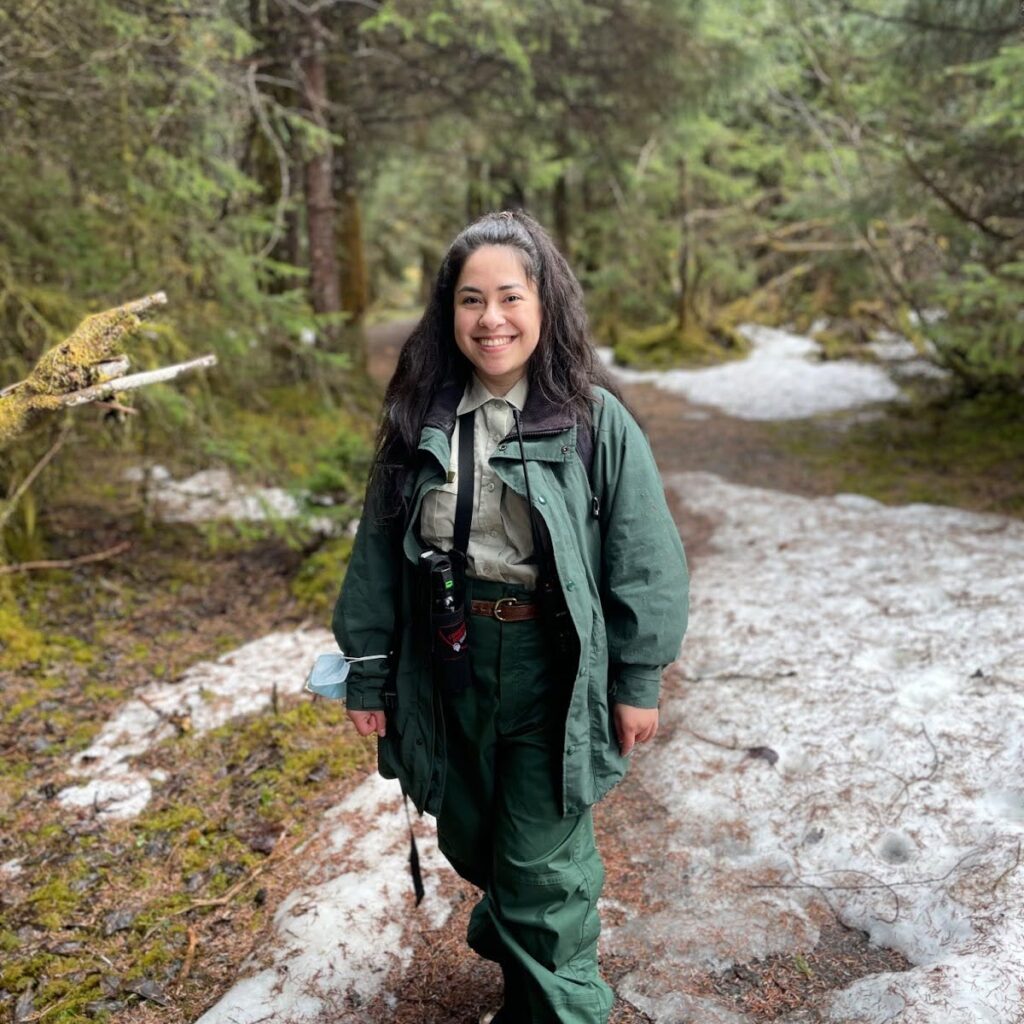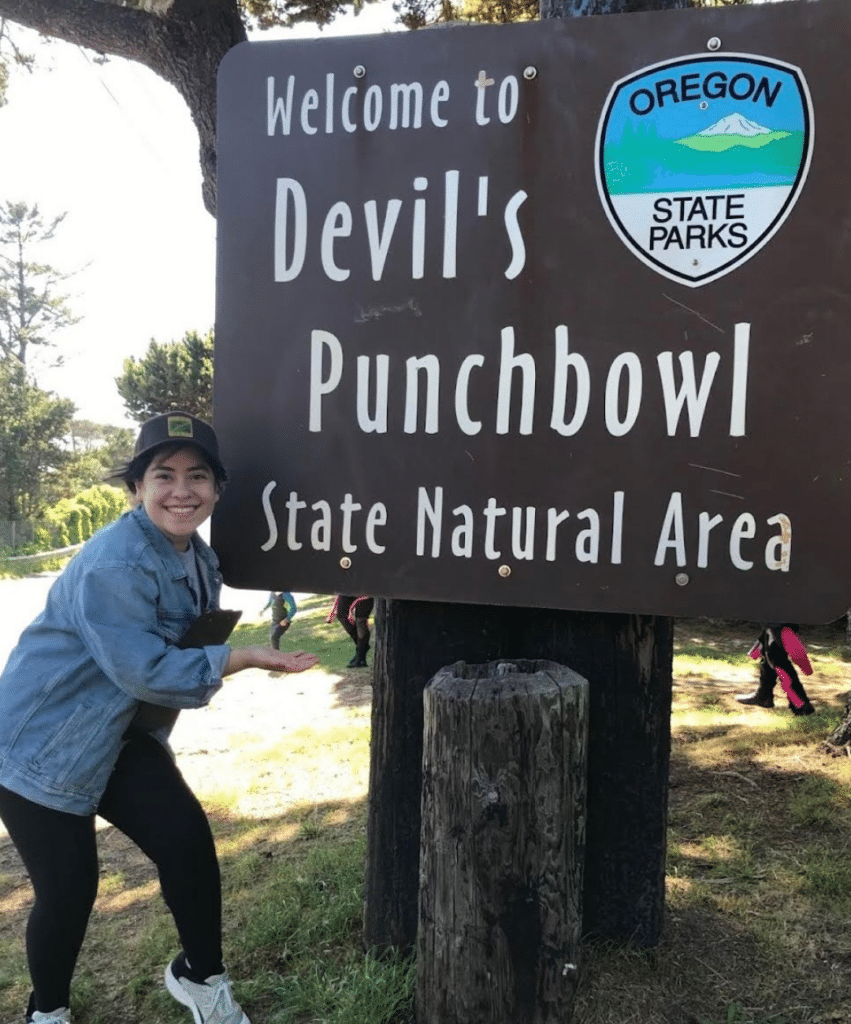
By Lisette Perez, Green 2.0 Summer Fellow
Lisette Perez discovered her passion for environmental education, storytelling, and advocacy post-graduation. Her career includes roles with the Oregon Department of Fish and Wildlife, the U.S. Forest Service in Juneau, and the Field Museum of Natural History in Chicago. She is also an inaugural member of the EPA’s youth-led council, advocating for frontline communities. In this blog, she shares her experience growing up in Chicago and how that has influenced her professional journey into the environmental movement.
Imagine a little girl from the South Side of Chicago who had limited access to nature growing up due to her parents’ safety concerns. Now picture that same girl years later working in the largest forest in the nation, the Tongass National Forest. How did I get there? Well, this is an ongoing journey that has not been linear, and I am still finding my way.
My story is more common than you might think. Many young kids of color share similar experiences, as we are often taught to view the outdoors as scary and merely a place for White families. This exclusionary legacy has shaped the environmental sector, leaving communities of color with limited access to nature and environmental resources.
In a 2018 survey conducted by the National Park Service, 77% of visitors were White, while only 23% were people of color. African Americans made up just 6%, Hispanic/Latino visitors 9%, and Asian Americans 7%. This significant underrepresen- tation in our national parks reflects broader systemic barriers.
Since I was not exposed to parks on the weekends growing up, unlike many of my colleagues and classmates, I didn’t learn about our national parks, forests, and lands until I went to college. When I was applying to colleges, I was unsure of my academic interests. I knew I was passionate about history and social justice, but as a first-generation college student and daughter of immigrant parents who were unable to continue their education, I felt stuck and unsure.

Without a clear direction, I blindly selected Natural Resources Science and Management as my major. At first, I wasn’t sure if this program was right for me, but luckily, the courses I took helped me feel like I belonged. From classes like Environmental Justice to Environmental Education and Topics in Parks and Recreation, I found my way into a program—and an industry—that is not always diverse or welcoming.
Thanks to the classes and the amazing professors who supported me, I was able to land incredible internship opportunities, from working with the Oregon Department of Fish and Wildlife on their Marine Reserves Programs to developing educational programs as an Interpretive Ranger for the U.S. Forest Service in Alaska and assisting with environmental initiatives on Chicago’s South and West Sides.

These experiences opened up so many doors and allowed me to understand where my true passions lie. I realized that my passion is working with people, and I wanted to continue to pursue that. These experiences deepened my interest in environmental education, climate activism, and environmental justice.
From there, I applied for and secured a seat on the first-ever youth-led council at the EPA, where I, alongside 15 other young leaders, work together to create policies that will help marginalized and frontline communities in the fight against climate change. As part of this council, we’ve been able to not only work closely with the Administrator and EPA staff on these policies, but also conduct research, hold public meetings, and engage in a plethora of other opportunities.
From being interviewed by the Weather Channel to speaking at the 95th Annual LULAC Convention about climate change, this role has granted me the chance to learn from amazing young professionals and has amplified my voice in the environmental space.
Additionally, I work with two global youth-led organizations to help with grassroots efforts and develop climate education for social media. Now, as a fellow for Green 2.0, I am connecting with inspiring professionals and esteemed organizations. But this is only the beginning of my journey. As I reflect on my path from the South Side of Chicago to where I am now, I am filled with gratitude and excitement for the road ahead.

Follow along with Lisette’s amazing work and career journey through LinkedIn!
